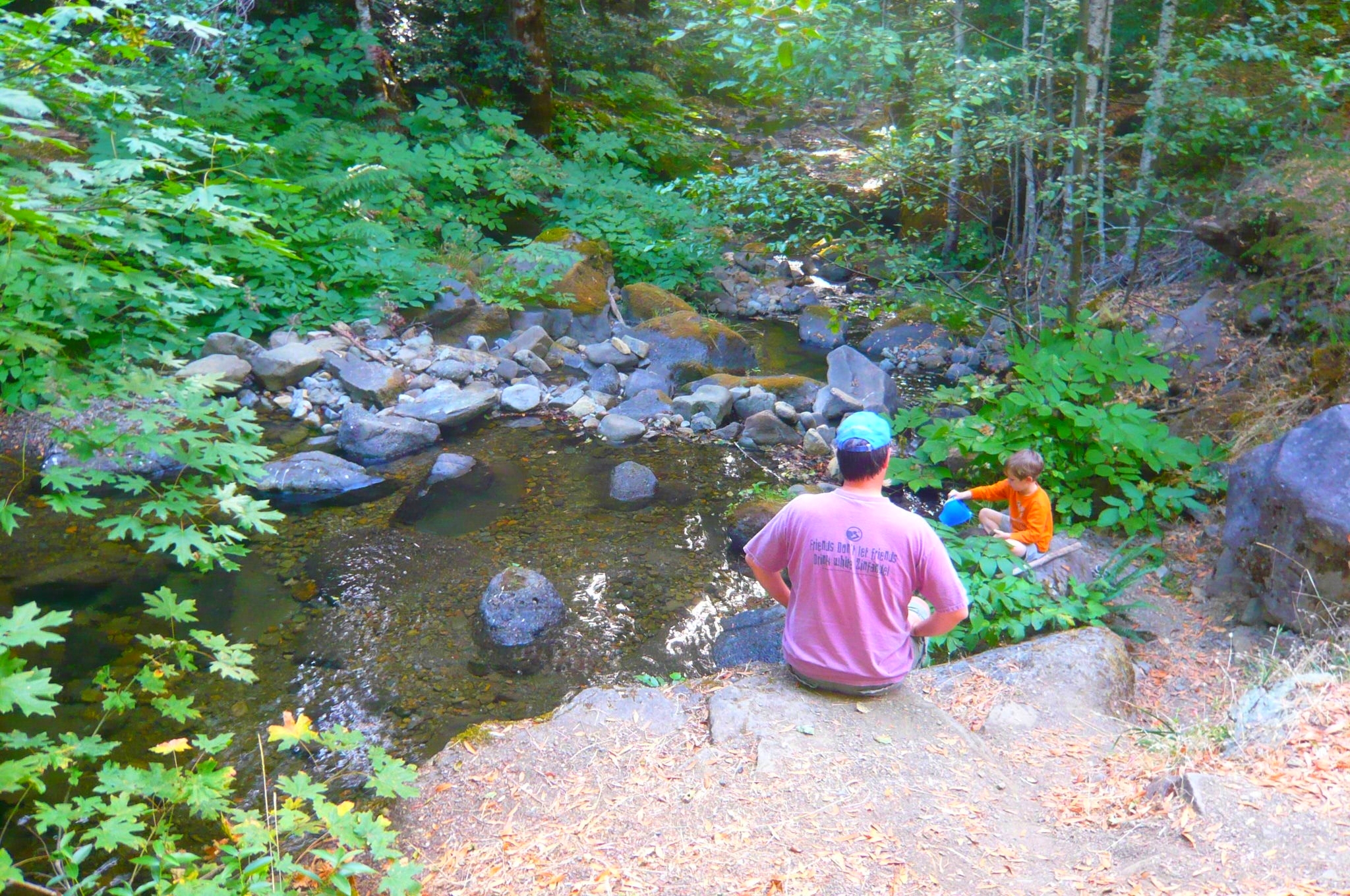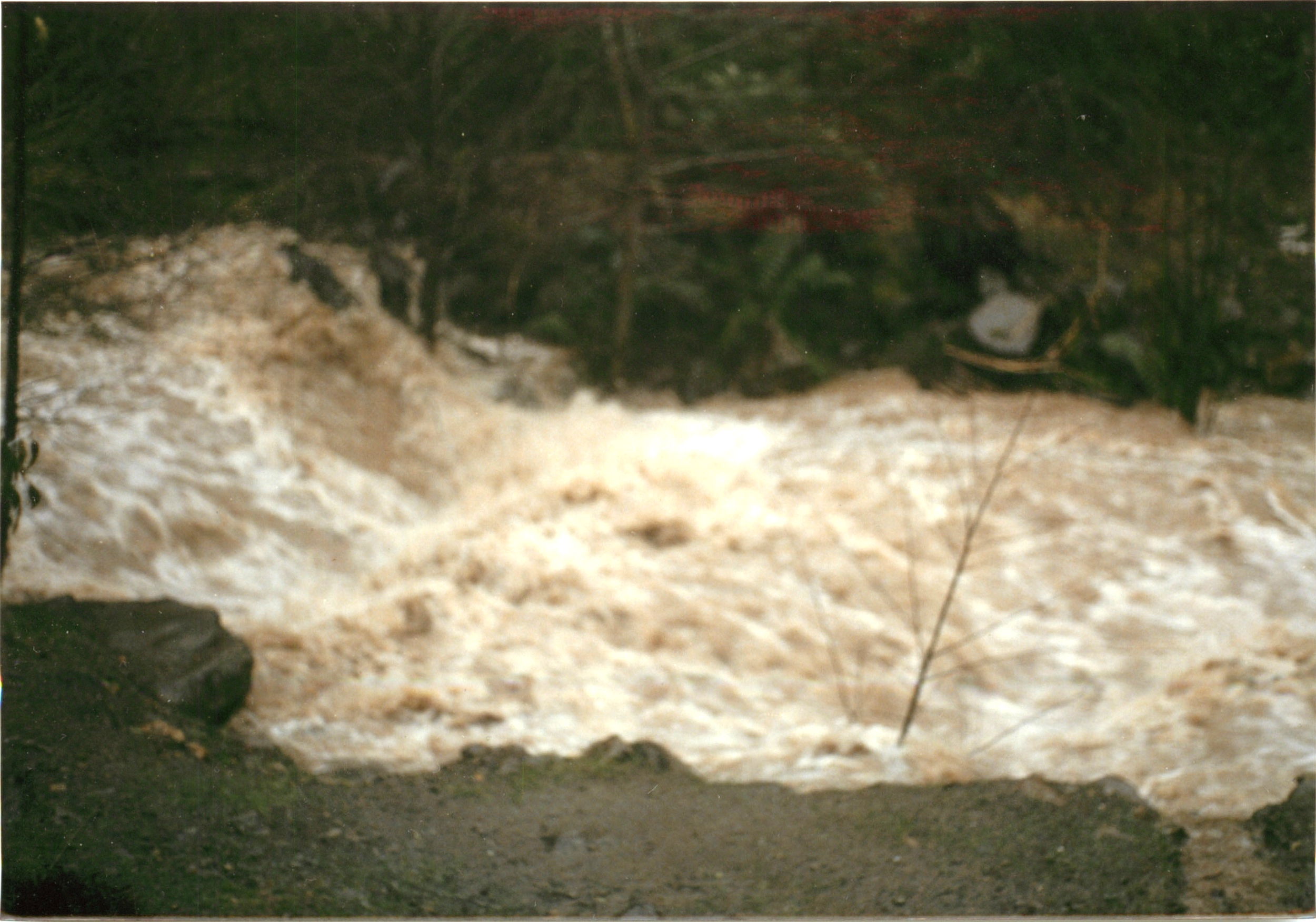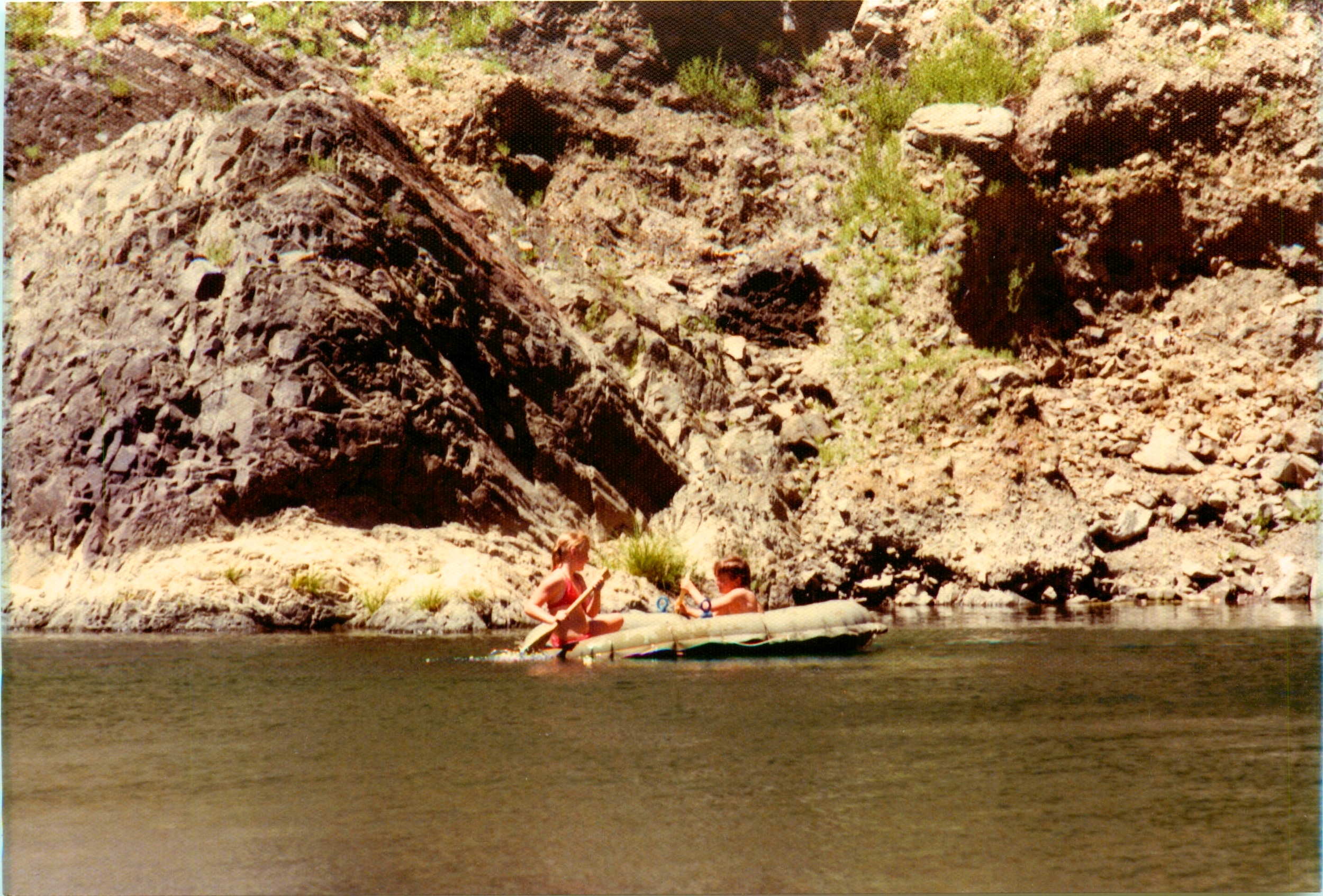My Father was Lucky to Live So Long
Lori Narlock
When my father died it was shocking. A model of good, clean living (despite the cigarette in the photo above), he was active, fit, and 56 years old. 56. So young. So young. I heard it over and over. Other people said it. I thought it repeatedly in my head. So young.
And then one day I looked at a photo of the cabin creek swollen to nearly overflowing one winter and it made me think of the Eel River in winter and my father and his cousin Donny in that river. And in that moment, I thought so young, my ass.
All things considered, my father was lucky to live so long.
He and Donny were best friends growing up and well into adulthood. They shared a risk-taking streak that was cultivated over childhood adventures in San Francisco, back when they could spend a day walking from the Cow Palace to Playland at the Beach.
As young men, they maintained their sense of adventure by embarking on remarkably stupid escapades at the cabin. They’d hike into hills covered with rattlesnakes and poison oak. They’d ride their dirt bikes far, far back into the canyon—one time returning with one bike towed by the other with a belt and another time with a lip cut so badly my father had to shave his moustache to get stitches. And they’d raft down the Eel River. In winter.
The South Fork of the Eel River runs parallel to Highway 101 and in summer it is an inviting, clear-water river that stretches 30 feet from bank to bank at its most-wide parts. It is shallow enough to walk across except for a few deep pockets here and there.
In winter, that same stretch of river swells and rises to form a moving mass of water that can be as wide as 100 feet and as deep as 20 or 30 feet. It turns brown from the pressure of that water churning up its bed of soft sand and from eroding its banks as it barrels along, from south to north.
For sane people there isn’t anything about the Eel River when it looks its angriest that says, “Hey, you: blow up that cheap raft you bought at the military surplus store, drop it in that rolling, boiling mass of mud, water, rocks and logs and ride it as far as you can”.
Clearly my dad and Donny were of a different ilk because that’s what they heard. I remember two times that they loaded up our faded khaki-colored raft into the back of someone’s truck, blew it up at the service station and then under cloudy skies pulled it out of the truck some miles from where they planned to exit the river.
They’d somehow launch it with themselves inside without a bit of safety gear. No lifejacket. No rope. No fear.
Both times they returned. Wet, cold and filled with stories about riding that wild river. How they managed to stay afloat is both a mystery and, I’ll admit, a strange source of pride. How they managed to get out of the river is an even bigger mystery. But they did it. And they managed to live into middle age.




